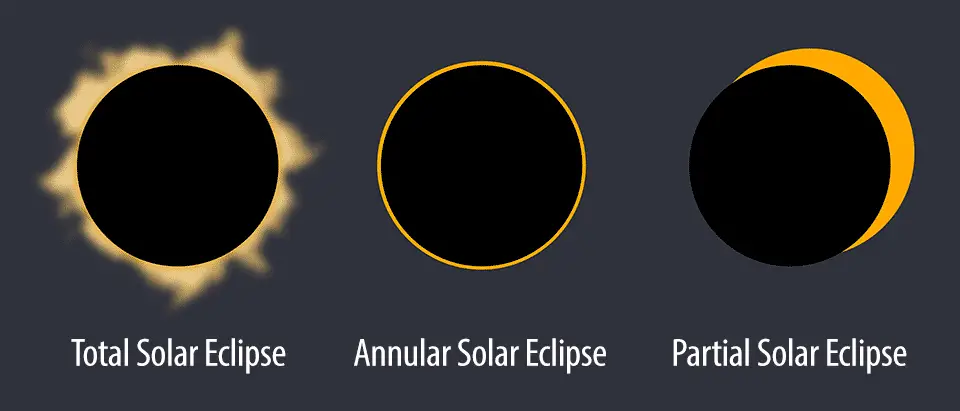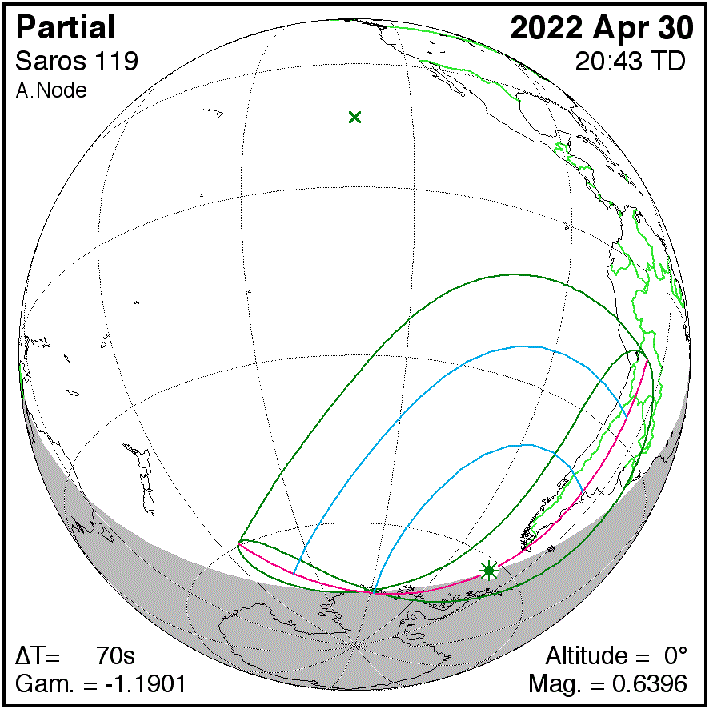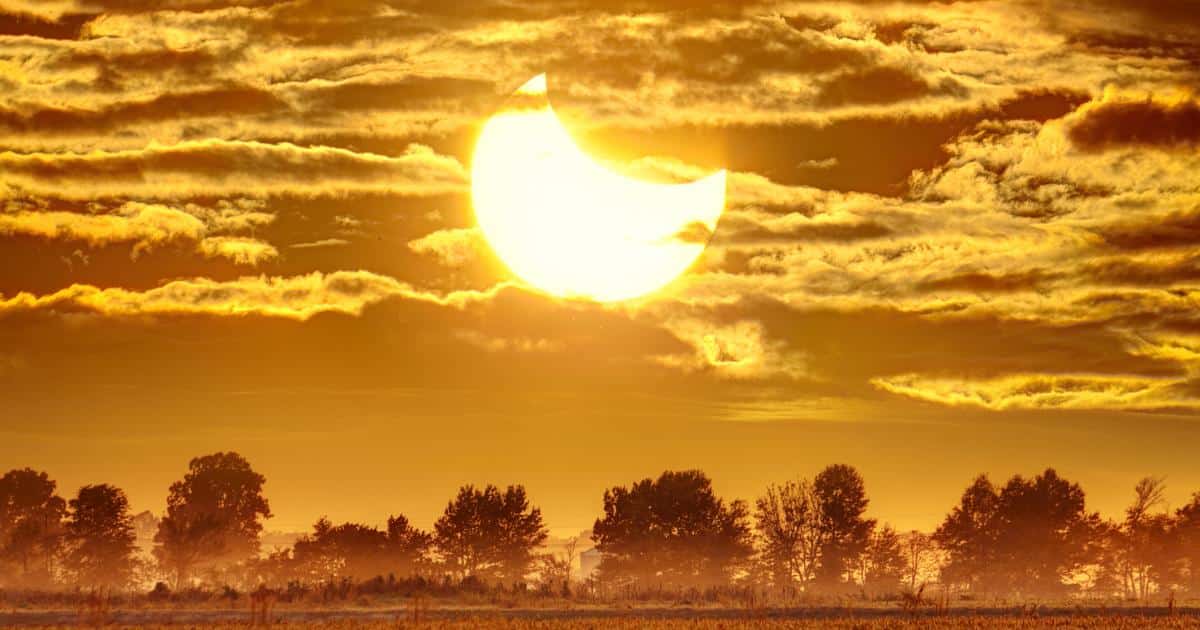Are you an eclipse enthusiast? If yes, then, the treat is right on your way. Because this year we are going to witness two solar eclipses. Just to let you know that both of these two eclipses of the sun will be partial ones. The first one i.e a partial solar eclipse will occur on Apr 30, 2022. The second one i.e also a partial solar eclipse will occur on October 25, 2022.
In this exclusive article, I am gonna walk you through each and every major as well as minor detail regarding the partial solar eclipse of April 30, 2022. This celestial event will be visible from some places, and from some, it won’t. WHY? Well, don’t worry, we will talk about this in the later section.
Before going ahead, let me give you a brief review of the definition of different types of solar eclipses. I mean, I want you to know why this first solar eclipse of 2022 is a partial one, not an annular or a total eclipse of the sun. Let’s dive right in…!!!
Editor’s Choice: Difference Between Solar and Lunar Eclipse in Tabular Form
What is a Solar Eclipse?

In total, there are three types of solar eclipses. A partial solar eclipse, an annular solar eclipse, and a total solar eclipse. A partial solar eclipse occurs when the moon partially blocks the sunlight from falling on the earth. Moreover, just because the visibility of the partial solar eclipse varies, the magnitude of the partial solar eclipse does not have any fixed value.
Similarly, an Annular Solar Eclipse occurs when the moon does not block out the sun’s disk entirely. It only covers the central part of the sun’s disk, leaving the sun’s outer edge to form a thin ring of fire. And, for that to happen, the moon has to be near its apogee i.e the farthest distance of the moon from the earth. Not to mention, during the annular solar eclipse, the magnitude of the eclipse is less than 1.
And, finally, a total solar eclipse occurs when the moon blocks out the sun’s disk entirely. And, for that to happen, the moon has to be near its perigee i.e the closest distance of the moon from the earth. Not to mention, during the total solar eclipse, the magnitude of the eclipse is equal to or greater than 1. Not to mention, there is one more type of solar eclipse. We call it a hybrid solar eclipse. To know more about it in a detailed format, you can check this article.
When and Where to See Next Partial Solar Eclipse of 2022?
Just because of the fact that the earth is round when half of the planet is living in the darkness, at the same time, the other half is enjoying the daylight. Therefore, as a result of the earth’s curvature, and, of course, the earth’s tilt, this partiality of the sun will be visible only from some specific geographical locations.
Visibility of Partial Solar Eclipse of April 20, 2022

The visibility of a partial solar eclipse on April 30 will solely depend on the fact that where on the earth you live upon. As per Fred Espenak (a retired American astrophysicist and NASA Scientist), this partiality of the sun will be visible from southern South America, parts of Antarctica, and over the Pacific and Atlantic Oceans.
Timing of Partial Solar Eclipse of April 30, 2022
According to the data available on timeanddate.com, on Saturday, April 30, the partial solar eclipse will begin at 18:45:19 UTC. After that, the maximum eclipse will occur at sharp 20:41:37 UTC.
At last, this partiality of the sun will end at 22:37:56 UTC. Not to mention, during the greatest eclipse, the moon will be able to obscure only 63.96% of the Sun’s disk. In order to understand it more clearly, refer to the table given below.
Eclipse Timing of Partial Solar Eclipse of 2022 April 30
| Eclipse Event | Time (UTC) | |
| 1. | Partial Solar Eclipse Begins | 30 Apr, 18:45:19 |
| 2. | Greatest Eclipse | 30 Apr, 20:41:37 |
| 3. | Partial Solar Eclipse Ends | 30 Apr, 22:37:56 |
Some Exclusive Facts About Partial Solar Eclipse of April 30, 2022
Here are some of the most important and exclusive characteristics facts about the upcoming eclipse of the sun.
- The eclipse magnitude is 0.6396.
- This eclipse of the sun belongs to Saros 119 Table and is number 66 of 71 eclipses in the series.
- On this day, the Sun is in the constellation Aries.
- For the Partial Solar Eclipse of 2022 April 30, Gamma has a value of -1.1901.
- We will also witness a total lunar eclipse just after two weeks i.e on May 16, 2022.
Editor’s Choice: Top 6 Solar Eclipse Facts you don’t Wanna Miss
Safety Issue
Is it safe to look at any type of solar eclipse without special glasses? Well, in my view, it’s a BIG NO. You should never try to look directly at the solar eclipse. However, if you really wanna take a look directly at this celestial event, you should definitely wear protective eyewear or special eye to protect your eyes. WHY???
Because the intensity of light released during any type of solar eclipse can severely damage your eyesight. Not to mention, it is perfectly safe to look directly at any type of lunar eclipse. At last, I wish you good luck with this epic sun gazing. And, do let me know about your astonishing experience in the comment section.
Editor’s Choice: Why my top 6 Lunar Eclipse Facts are BETTER than Yours?
That’s it for this post. If you like this article, share it if you like, like it if you share it. You can also find us on Mix, Twitter, Pinterest, and Facebook. Hey man, If you have come this far, do give us feedback in the comment section. It would make my day. You can also make a donation. Your donations will help us to run our website and serve you BETTER. Cheers!!!
